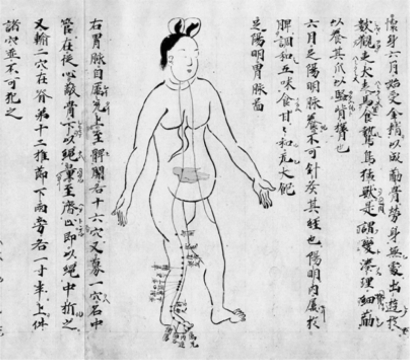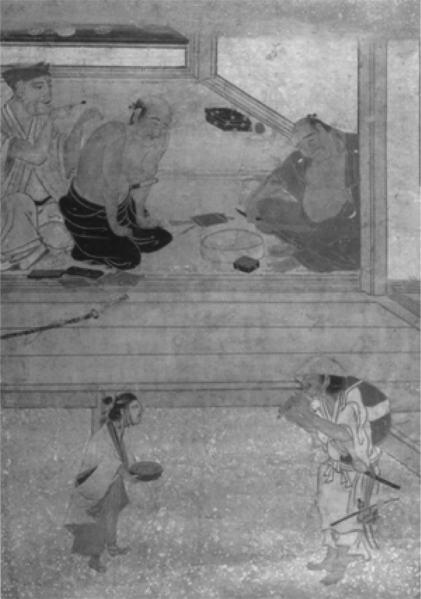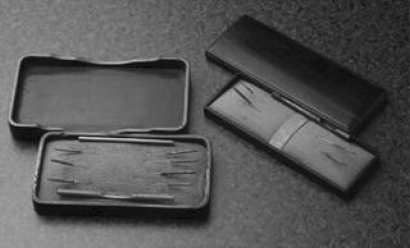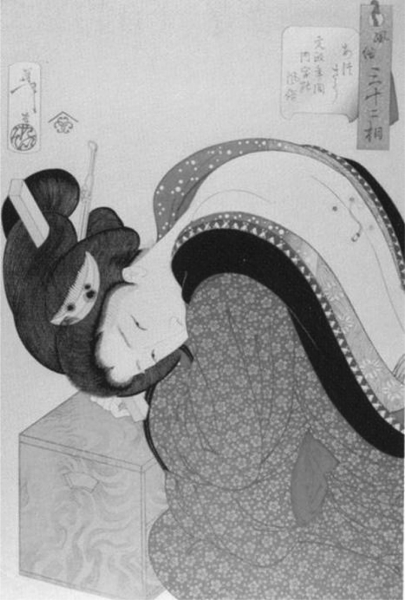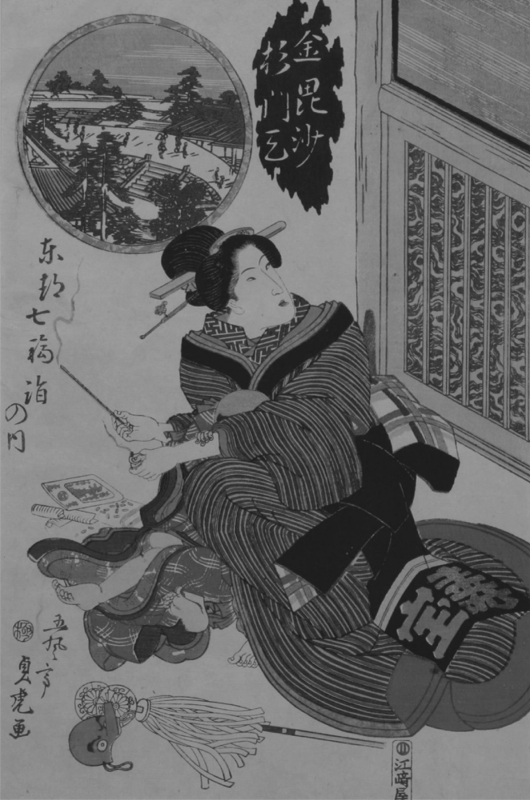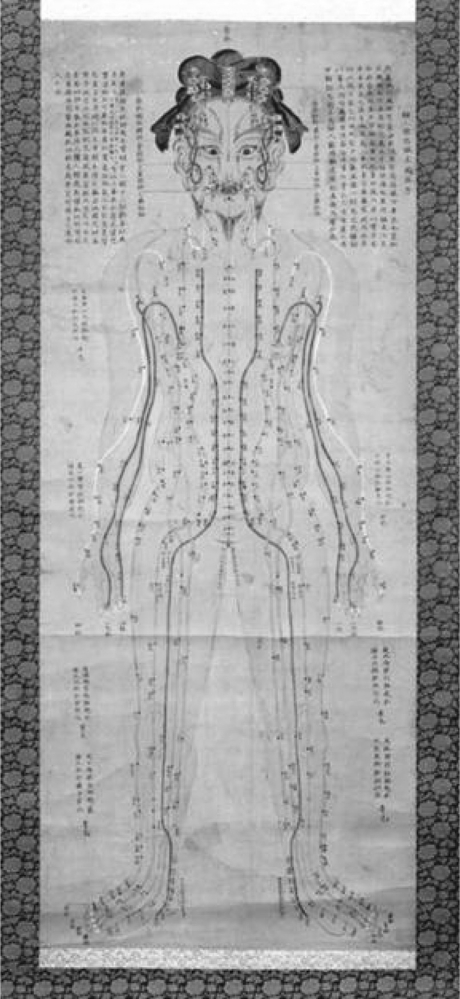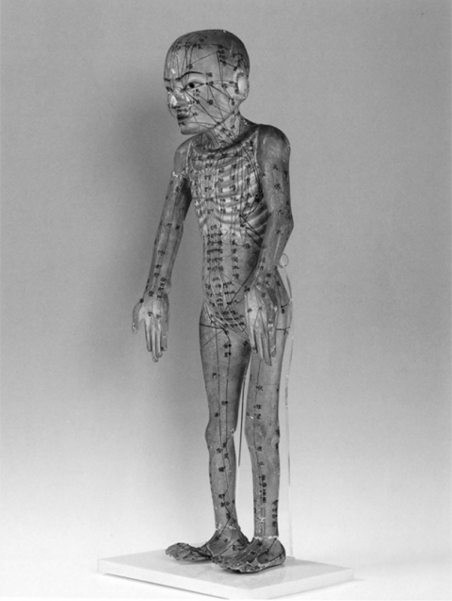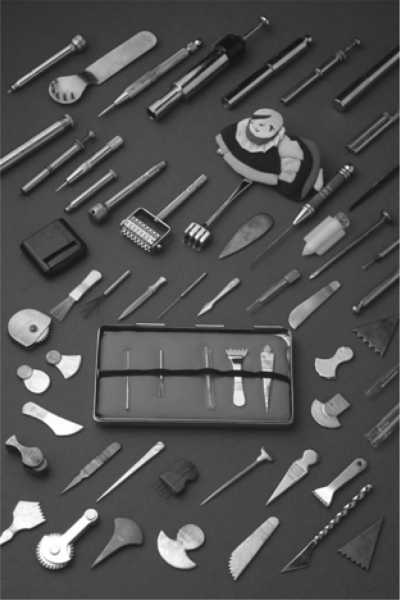Abstract
After Chiso brought acupuncture to Japan from Wu (China) in the sixth century, it has progressed in unique ways within the various historical milieus of the past 1500 years. Ishitsu-rei, the first medical law of Japan established in 701, explains the medical system of acupuncture in detail showing that acupuncture was being administered under the authorization of the national government. For the next 1200 years, acupuncture continued to be an important facet of public health in Japan. From the Azuchimomoyama through the Edo period, the knowledge exchange with China became active and people who studied in China developed new styles and techniques of acupuncture treatment and organized their own private schools or ryu-ha in Japan. In 1635, when the Edo government decided to close the country, Japan cut-off exchange with foreign countries for over 200 years. The national isolation caused some development that was unique to Japan. During that time, acupuncture filtered into people's everyday lives. Moxibustion, in particular, became popular as a treatment that ordinary people could practice by themselves. Also in this period of isolation, Western medicine was imported from Holland, the only country allowed to maintain trade with Japan. This novel modern medicine had a strong impact on Japanese medicine, which has its foundation of Chinese traditional medicine. At the same time, Japanese acupuncture was introduced into Europe via Holland. When Japan opened its borders in 1865 period, the new government was eager to accept Western culture to the extent of prohibiting the progress of Japanese acupuncture for a period of time. Even so, Japanese acupuncture has survived and flourished up to the present day due to the strong demand and the great efforts of the practitioners. Scientific studies are now in the process of establishing a firm evidence base for over a millennium of clinical use, respecting the classic ideas of the traditional treatment.
Keywords: Japanese acupuncture, history moxibustion, Ishinpo, needle tube, hammer tapping, Harikyu museum
Introduction
Ancient Japanese culture and medicine are not well understood due to the paucity of existing documents. Located on the easternmost part of Asia, various cultures came to Japan via the Silk Roads from China or Korea (1). During this time, Japan had cultural exchange with Korean and Chinese. During this booming period of cultural exchange, brilliant scholars such as Ganjin (688–763) and other Chinese monks came to Japan, bringing gifts that represented the best of the art and technology of that time. These goods were kept in the Shosoin in the old capital of Nara and have been well taken care of till today (2).
Chinese ideas and medicines were a vital part of this knowledge exchange with Japan. Chinese medicine included the five skills: herbal medicine, acupuncture, moxibustion, tao-yin and massage and over the years, the natural features of Japan transformed these medicines into modalities that are uniquely Japanese.
It is important to note that there are different perspectives on the subject of Japanese acupuncture history depending on the documents reviewed. In the case of diverse viewpoints, we chose the most general consideration as the foundation of this report. Also, since acupuncture has been understood to include the skill of moxibustion in Japan, the word acupuncture means acupuncture and moxibustion in this article.
The Asuka to Nara Periods (592–794): Chinese Medicine is Introduced into Japan
The first foreign medicine was imported from Silla (Korea) in 414. The nature of this medicine is unknown, but it has been deduced that the medicine was mainly herbal and was practiced during that period in Japan (3). The oldest existing records of any formal medical literature in Japan arrived from Wu (China) in 562. These various medical books included topics such as herbal drugs and acupuncture. The acupuncture books included the current ‘meridian and acupoints chart’ (4,5). At first, Chinese medicine was imported through Korea but as direct travel became possible to China, the latest medicine gradually began to be imported directly and from that time Chinese medicine has had a profound effect on medical practice in Japan.
During the active exchange between Japan and China, a period of reform was initiated and the first legal codes in Japan were established in 701. At the same time, Ishitsu-rei, the first medical law of Japan, was also established. This law consists of 26 articles and explains the Japanese medical system, including the details of medical education, the number of years for medical training and the exam. The institutions of acupuncture doctor, acupuncturist, acupuncture student, massage doctor, massage therapist and massage student, besides the institutions of medical doctor, doctor and medical student were organized and written in this law, and acupuncture was administered under the authorization of the national government. The law directed that not only the acupuncture student, but also the medical student had an obligation to study acupoints, inferring that acupuncture was regarded as important medicine.
The Heian Period (794–1192): A Lively Period of Exchange with the Tang Dynasty (China)
As soon as the Heian period began, exchange with the Tang dynasty (China) was activated, and aristocrats (doctors or well-educated people) who could travel to China brought high-grade information and current medical books to Japan. As a result, Tang medicine began to take root in Japan, until 894 when exchange with China stopped and Japanese physicians gradually reverted back to the original Japanese medicine.
An acupuncture doctor, Yasuyori Tamba, who served at a court presented Ishinpo, the oldest medical book existing in Japan, to the Emperor in 984. This medical book shows how medical knowledge from the foreign sources were arranged in response to circumstances in Japan. This book comprises a systematic combination of material on medicine, acupuncture, herbs, diet, hygiene and sexual medicine, to name a few. Acupuncture can be found on the second scroll, right after the introduction of the first scroll. Ten meridian charts relating to pregnant woman can be seen in the 22nd roll (Fig. 1) (6). Although pulse diagnosis and meridian lines can be found in the quotation book Ishinpo of Sui and Tang (China), but their descriptions were removed when the book was completed. Since acupuncture is not an easy treatment method, it is believed that he may not have wanted to reveal the special techniques involved (7).
Figure 1.
‘Ishinpo’ (replica). [Source: Mori H, Nagano H. Harikyu Museum (Museum of Traditional Medicine), Vol. 2. Publishing Department at Morinomiya College of Medical Arts and Sciences, 2003.]
The Azuchimomoyama Period (1573–1600): Private Schools of Medicine are Established
In the Azuchimomoyama period, some ryu-ha or private schools were established by people who studied in Ming (China) and returned to Japan, or by these students who had studied in China or Korea and had developed new styles and skills of acupuncture treatment. Japanese original theory of acupuncture treatment and special acupuncture skills emerged through these ryu-ha.
Dosan Manase (1507–1594), an active medical doctor of that period, established the basics of Japanese traditional medicine. He and his successor served as medical doctors to samurai leaders in that period which was called the Civil Age. Dosan Manase considered the importance of meridian and acupoints for acupuncturists and doctors. At that time, the differing views concerning the location of acupoints used to be a topic of discussion. He recommended the book shi si jing fa fui, a technical book of meridian and acupoints. The importance of acupuncturists’ learning about meridian and acupoints continues till present. Even after 400 years, textbooks of meridian and acupoints used at colleges in Japan are based on shi si jing fa fui. Dosan also opened a systematic medical school and it was presumed that the school emphasized on teaching herbal medicine, but acupuncture and moxibustion were also taught (8,9).
Among the ryu-ha opened during this period, the most famous was by Isai Misono, which devised a new technique of acupuncture of inserting a needle by a hammer tapping the head of the needle (Fig. 2). This technique was used mainly on the abdomen, and the needles were made of gold and silver instead of iron because these were soft and gave slight stimulation. Other epoch-making work established the importance of palpating the abdominal region in order to know the place of vicious Qi (pathogenic factor) and make diagnoses. Abdominal diagnosis is an important diagnostic method for Japanese acupuncturists till present (10).
Figure 2.
‘Old Picture of Workman (acupuncturist)’, the early Edo period drawing replica 41 × 28.5 cm. [Source: Mori H, Nagano H. Harikyu Museum (Museum of Traditional Medicine), Vol. 2. Publishing Department at Morinomiya College of Medical Arts and Sciences, 2003.]
The Edo Period (17th–19th Centuries): A Time of National Isolation, Social Order and Peace
After the Azuchimomoyama period, the Edo period brought an era characterized by a lawful society and the maintenance of social order and peace that lasted for 265 years. When the Edo Shogunate (government) decided to close the country, Japan cut off any exchange with almost all foreign countries for over 200 years. The national isolation fostered the development of culture and medicine unique to Japan.
During the beginning of this period (17th century), various ryu-ha, originated in the Azuchimomoyama period, prospered greatly. Some ryu-ha used oshide, the technique of holding the acupuncture needle with one hand while inserting it with the other, making it possible to give slight stimulation using thin Japanese needles. It also gave importance to acupoint treatment in which an acupoint is found by feeling the surface of skin with the fingers.
Needle Tube Insertion Method and the Connection Between Japanese Acupuncture and Blindness
During this period, a blind acupuncturist, Waichi Sugiyama, devised a needle tube insertion method. In this method the needle is put into a thin tube to insert it in the body. This technique enabled the insertion of the needle without any pain and promoted the use of thinner needles. Till that time, the main needle insertion methods had been the ancient Chinese method in which the needle is inserted directly into the body and the needle was tapped with a hammer. The needle tube insertion method was epoch-making and since the beginning of its use, many techniques have been devised using the tube, making it as one of the most characteristic developments of Japanese acupuncture in Japan (Fig. 3). It is still widely used in Japanese acupuncture, and acupuncture students learn this method as a primary technique in school (11).
Figure 3.
‘Edo's Filiform Needle and Needle Box’ 4 × 11.5, 6 × 11 cm. [Source: Mori H, Nagano H. Harikyu Museum (Museum of Traditional Medicine), Vol. 2. Publishing Department at Morinomiya College of Medical Arts and Sciences, 2003.]
Many disciples gathered and in 1680, Sugiyama established a school to teach acupuncture and massage to the blind. This was the world's first organized vocational school for the physically handicapped. From that time, many acupuncture schools for the blind were built all over the country. In modern Japan, it is still believed that acupuncture and massage are occupations for the blind (12,13).
Japanese Acupuncture was Introduced into Europe
During this period of national isolation the Japanese exposure to Europe was limited only till exchanges with Holland. Nonetheless, an English version of the book about moxibustion was published by Hermann Bushoff in 1676. He introduced the Japanese word, moxa, in his book. This word, moxa, which is derived from mogusa, has its root in almost all European languages (14).
In 1690, Engelbert Kampfer (1651–1716), a German physician who also worked for the Dutch East India Company, visited Japan. He wrote about Japanese acupuncture in his book and described some of the tools of Japanese acupuncture techniques and how needles were inserted in acupoints far from the affected area of the disease (4).
The Life of the Common Folk
Various epidemics were raging during the Edo period and people relied on acupuncture and moxibustion for treatment. While moxibustion was widely practiced by ordinary people, acupuncture was confined to trained specialists. During this era, the government encouraged moxibustion for health enhancement. Moxa became so popular that it was widely used irrespective of factors such as age, gender, etc. (15). The moxibustion treatments given by Buddhist monks also became popular and still many Buddhist temples in various places in Japan use moxibustion. Seems Hot (Fig. 4) is a collection from Harikyu Museum (the Museum of Traditional Medicine) at Morinomiya College of Medical Art and Sciences. This woodblock print shows a woman receiving moxibustion therapy on her back.
Figure 4.
‘Seems Hot’ in ‘the Customs 32 pieces’ (1888) 39 × 26 cm. [Source: Mori H, Nagano H. Harikyu Museum (Museum of Traditional Medicine), Vol. 2. Publishing Department at Morinomiya College of Medical Arts and Sciences, 2003.]
During this era, people used to travel to visit shrines and hot-spring cures. One of the most famous poets, Basho Matsuo, wrote in his travel diary, The Narrow Road to the Deep North about applying moxa during his travel. Moxa and the incense stick were the traveler's indispensable items (16). A rare Ukiyoe (Fig. 5) shows a woman holding her child between her knees and applying moxa as apart of moxibustion therapy. This shows how people applied moxa to their children for prevention of diseases and to promote healthy growth.
Figure 5.
‘Scene of Pediatric Moxibustion’ (in ‘the Touto Seven Fortune Visiting’, to Konsugi bisyamon). Drawn by Gohutei Sadatora (around 1830–1842) 38 × 25.5 cm. [Source: Mori H, Nagano H. Harikyu Museum (Museum of Traditional Medicine), Vol. 2. Publishing Department at Morinomiya College of Medical Arts and Sciences, 2003.]
Charts and dolls with meridians and acupoints show invisible meridians with lines and invisible acupoints with dots. (Fig. 6). Many of them were made in the Edo period and a collection of these illustrations in the Harikyu Museum are valuable for tracing the history of acupuncture. In China, meridian dolls (Fig. 7) were originally made of copper, but gradually they began to be made of paper or wood, which emphasized the ribs and projection of the bone for locating meridians and acupoints (7,17). They could be marked with meridians and acupoints.
Figure 6.
‘Meido Dojin-zu’ 134.3 × 54.8 cm colored reproduction. [Source: Nagano H. Harikyu Museum (Museum of Traditional Medicine), Vol. 1. Publishing Department at Morinomiya College of Medical Arts and Sciences, 2001.]
Figure 7.
‘Saga prefecture Takeda family's Douningyo’ height 80.0 × breadth of shoulder17.0 cm. [Source: Nagano H. Harikyu Museum (Museum of Traditional Medicine), Vol. 1. Publishing Department at Morinomiya College of Medical Arts and Sciences, 2001.]
Dutch Medicine Becomes Widely Accepted Through Contact with Holland
By the 19th century, Dutch medicine had become widely accepted and a number of Dutch medical books had already been translated into Japanese. The number of Japanese, both acupuncturists and doctors, trying to study Dutch medicine from these books increased and spread the idea of accepting Dutch medicine, while retaining the ideas of Chinese medicine.
Phillipp Franz von Siebold visited Japan as a physician with the Dutch East India Company in 1823. He already knew about acupuncture treatment in Japan and was greatly impressed by his observations of actual acupuncture treatments. After Siebold returned to Holland, he introduced Japanese acupuncture as well as the geography, history, culture, and tradition of Japan (13). Just as Japanese acupuncture attracted Siebold's interest, Dutch medicine piqued the interest of Japanese physicians as he taught Dutch medicine at a private school and treated patients. Through his work, the number of people studying Dutch medicine increased. This exchange of ideas had a great influence on upcoming Japanese medicinal practices and the medical system.
The Meiji Period (1868–1912): Japan Opens to the West and Favors Western Medicine over Acupuncture
The samurai-based government of the Edo period collapsed in 1868 and the new Meiji government was eager to rapidly accept Western culture and hence enable Japan to gain good position in the world. In the process, they denied Japanese traditional culture, considering it out of fashion. The medical system was no exception to this thought, and the new government regarded Japanese traditional medicine, including acupuncture, as antiquated and unnecessary. They decided to accept Western medicine and established a system of examination for qualifying people to practice, which is the root of the current state examination that provides the license to practice medicine. Education, examination and position of Japanese (Chinese) traditional medicine were denied and Western medicine formed a single policy ending an era that had lasted 1200 years since 701, when Ishitsu-rei was enacted and acupuncturists were approved as holding the same position as a doctor (18). At present, the occupation of acupuncturist in Japan is different from that of doctors, but both acupuncturists and doctors can be approved to practice acupuncture in Japan.
In 1878, the first school for the blind was built in Kyoto and acupuncture studies were included in its curriculum. As explained previously, under the influence of Sugiyama's movement, acupuncture had been taught at schools for the blind since the Edo period. Western medical doctors also started studying acupuncture to establish scientific proof and through their work pioneered new acupuncture. As a result, a new movement was set to reconstruct acupuncture, and in 1911 new rules for acupuncture and moxibustion clinics were established, which allowed acupuncture and moxibustion to operate as business, effective until 1947.
Modern Times, 1912–present (Taisho, Showa and Heisei Eras): Acupuncture Regains its Place and New Therapies are Created
Various treatment methods and techniques, which are being practiced even now, appeared after Taisho era. One of these treatments is a method used for children to give stimulation by rubbing and patting the skin with a special needle (Fig. 8).
Figure 8.
‘Modern and present-day pediatric acupuncture needle’ [Source: Mori H, Nagano H. Harikyu Museum (Museum of Traditional Medicine), Vol. 2. Publishing Department at Morinomiya College of Medical Arts and Sciences, 2003.]
Chinese Medicine Revival and Inventions Enliven Acupuncture
During 1936, there was a revival of Chinese medicine (Oriental medicine) advocating whole-body treatment that was used most importantly to treat the underlying causes of disease. Meridian therapy was also originated as an acupuncture therapy based on a theory from the classic book, nangyo (nan jing) (1st century AD). It gave importance to the course of meridians and to treating points by pulse diagnosis. A new way was also invented to insert the tip of the needle a few millimeters into the skin and fix it with tape so that it would not move for a certain period of time. Meanwhile, the medical world gained interest in acupuncture. Doctors of Western medicine began scientific studies of acupuncture (19).
Acupuncture Restricted by the US in Post-war Japan
After the war ended in 1945, the General Headquarters (GHQ) of the Allied Forces occupied Japan including the Japanese medical system. The GHQ demanded that acupuncture and moxibustion should not be used as treatments, reasoning that they were unscientific. Doctors and scientists who appreciated acupuncture made desperate efforts to convince the government to keep acupuncture as a viable treatment. As a result, laws were enacted in 1948 and since then acupuncture has been regarded as a part of the medical practice, and the license is the same as that of medical doctors and dentists, instead of the former license of business permit. The law includes the regulation that a person must complete a prescribed curriculum at an officially accredited school and pass a qualifying examination given by each prefecture to receive an acupuncture license.
Post-war Increase in the Number of Acupuncture Students
The national health insurance law was enacted in 1938 but Western medical treatment remained too expensive for many citizens. Acupuncture was seen as an easy and comfortable way to treat and preserve their health. In 1961, universal medical care insurance was enacted. After the war, the number of people who wanted to become acupuncturists increased not only among the blind, but also among sighted people. While acupuncture was mainly taught at schools for the blind until the war, after the war, acupuncture colleges more colleges were found. In 1983, the first acupuncture university, Meiji University of Oriental Medicine, was established. In 1994, the acupuncture university instituted a doctoral program so that students could earn a PhD in acupuncture. Many blind acupuncturists have also been conducting scientific studies, and schools for the blind have produced many acupuncturists who hold a PhD in medicine.
National Standardized Examinations Took the Place of Local Examinations
Regarding the system of the qualifying examination, national standardized examinations took the place of local examinations in 1993. Although acupuncture education is still in the curriculum at schools for the blind, both blind and sighted people take the same acupuncture education, same qualifying examination, and hold the same license for acupuncture and moxibustion.
Conclusion
In conclusion, acupuncture adapted from China has undergone diverse transitions and progress under the influence of the society, culture, character and natural features of Japan. Although there were times when Japanese were affected by social situations and politics, but it has flourished due to the efforts of people and patients who demand acupuncture as mode of treatment. Japanese acupuncture is still in progress both clinically and scientifically. Respecting the classic ideas of traditional treatment, scientific studies have been creating an evidence base. Furthermore, Japanese acupuncture that took root in the community as medical treatment for health or primary care, still continues to be one approach to treatment, even after over a millennium of practice.
Acupuncture is not confined to medical treatment for health but is making inroads in a variety of fields, including sports, beauty and welfare, and is expected to improve the quality of life of those undergoing palliative care. In future, Japanese acupuncture will become an active component of complementary, alternative and integrative care not only in Japan but also throughout the world.
Acknowledgments
We wish to express our gratitude to Mr Hiroyuki Yokoyama and Mr Katsumi Matsubara for giving valuable suggestions and comments. Our special thanks are due to Ms Monica Brase, MPH, and Mr Ronald Gardner for giving helpful advice concerning English expressions. Also, we would like to thank Mr Tomofumi Ozaki, Mr Masaya Mori and all my colleagues at Morinomiya College of Medical Arts and Sciences for advice and providing valuable materials concerning the history of Japanese acupuncture.
References
- 1.Kojima K, editor. Yuzankaku: 2005. Silk Road no roman to bunmei no koubou. [Google Scholar]
- 2.Moriya K, Kojima K. Yuzankaku: 1997. Todaiji to Syosoin. [Google Scholar]
- 3.Ishihara A. Shibundo: 1970. Nihon no igaku-sono nagare to hatten. [Google Scholar]
- 4.Sakai S. Tokyo Syoseki Co., ltd; 1982. Nihon no iryoshi. [Google Scholar]
- 5.Maruyama T. Shinkyu koten nyumon-cyugoku dentou igaku heno syotai. Shibunkaku Shuppan Co., ltd; 1987. [Google Scholar]
- 6.Sugitatsu Y. Shibunkaku Co., ltd; 1991. Ishinpo no denrai. [Google Scholar]
- 7.Nagano H Harikyu Museum (Museum of Traditional Medicine) Vol. 1. Publishing Department at Morinomiya College of Medical arts and Sciences; 2001. [Google Scholar]
- 8.2001. Inochi wo atahu – iryo no rekishi. Okayama Prefectural Museum. [Google Scholar]
- 9.Nagano H. 2002. Hari no hibiki Kyu no nukumori - iyashi no rekishi. Naito Museum of Pharmaceutical Science and Industry. [Google Scholar]
- 10.Mori H, Nagano H Harikyu Museum (Museum of Traditional Medicine) Vol. 2. publishing department at Morinomiya College of Medical arts and Sciences; 2003. [Google Scholar]
- 11.1992. Kyokasyo shippitsu syou iinkai. Hari kyu jitsugi <kiso hen>. Ido-no-nippon-sha. [Google Scholar]
- 12.Hirose H. 1984. Shinkyu no rekishi. Osaka-fu mougakkou dousoukai. [Google Scholar]
- 13.Mori H. 1983. Igakushigairon. Publishing Department at Morinomiya College of Medical arts and Sciences. [Google Scholar]
- 14.Wolfgang M. Kyushu University, Faculty of Languages and Cultures; 2003. Hermann Bushoff. tuhu ni kansuru syosaina kenkyu oyobi sono kakujitsuna chiryohou to kikime no aru yakuzai ni tsuite. [Google Scholar]
- 15.Sakai S. Kodansya; 2003. Edo no yamai to yojyou. [Google Scholar]
- 16.Fukunishi S. Touseisya; 2000. Okyu banashi arekore. [Google Scholar]
- 17.Mori S. Publishing Department at Morinomiya College of Medical arts and Sciences; Shinkyu OSAKA No.43, No.56, No.59, No.72. [Google Scholar]
- 18.Souda H. Zusetsu Nihon Iryo Bunkashi. Shibunkaku Syuppan Co., ltd; 1989. [Google Scholar]
- 19.Serizawa K. Shinkyu No Kagaku -Riron Hen-. Ishiyaku Syuppan Co., ltd; 1979. [Google Scholar]
- 20.1969. Gendainihonno shinkyu. Ido-no-nippon-sya. [Google Scholar]
- 21.Fujikawa Y. 1982. Nihon igakushi. Keiseisya. [Google Scholar]
- 22.Kosoto H. Kanpo No Rekisi. Taishukan Syoten Co., ltd; 1999. [Google Scholar]
- 23.Yano T, Kusumi T. The Japan Society of Human Arts and Sciences; 2002. Densyo igaku. [Google Scholar]



